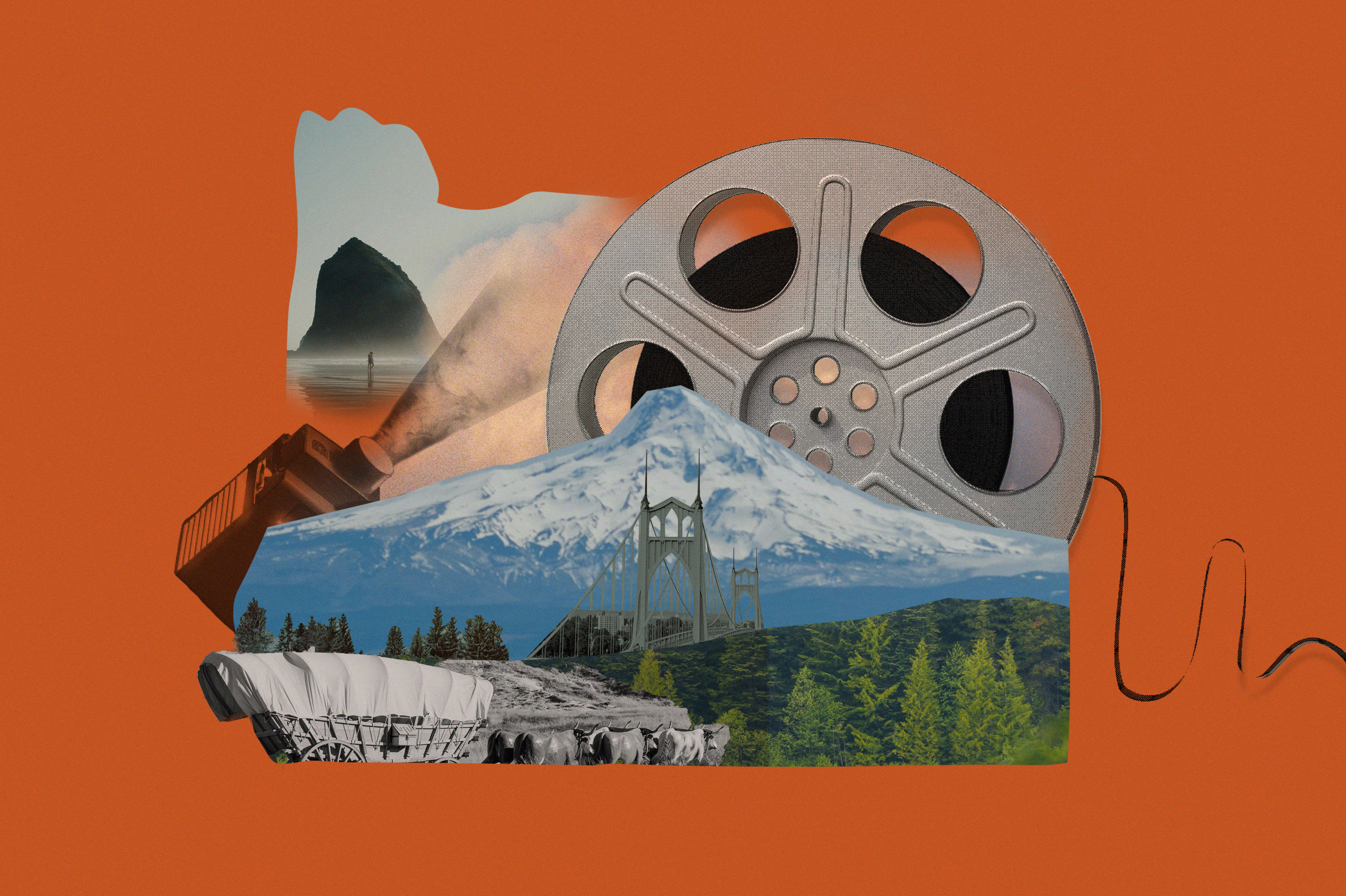Red Sea
ON A SPIT OF TUNDRA jutting toward Bristol Bay in southwest Alaska, a rough settlement known as Graveyard Point looks like a novelist’s post-apocalyptic vision.
Crumbling wooden buildings with rusted corrugated metal roofs stand along boardwalks where every step risks a whack from a loose plank. Curious bears wander the encampment. As erosion wears away the bluff that overlooks the bay and gives the place its name, decades-old caskets tumble down and deposit the cannery’s former residents (or parts of them) on to the beach.
Every summer, around a hundred professional fishermen trek to Graveyard Point and carve living quarters out of the ruins. For weeks, they battle surging tides, swarming mosquitoes, brutal wind, thigh-deep mud, and the pulse of near-constant daylight. The lure: millions of sockeye salmon—the world’s largest run—churning out of the Bering Sea to spawn in the lakes, rivers, and streams of the undisturbed tundra that surrounds Bristol Bay.
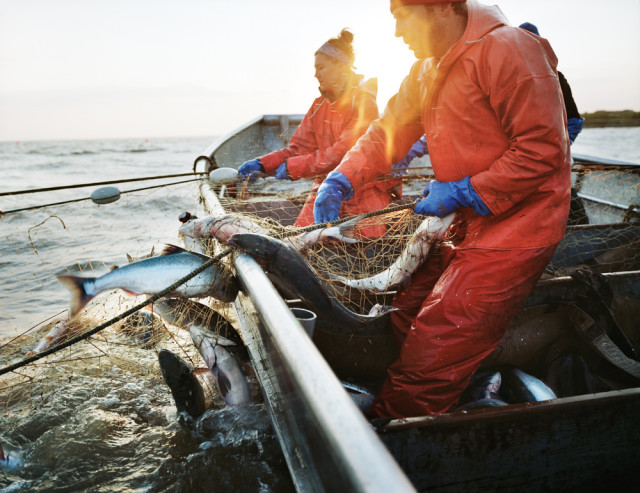
Krystal Ten Kley and Reid Ten Kley haul gillnetted sockeye salmon out of Alaska’s Bristol Bay.
Image: Corey Arnold
Reid Ten Kley, of Portland, and his cousin Christopher Nicolson, of Brooklyn, grew up fishing these hostile waters. “My first season at Graveyard was when I was 6, I think,” Nicolson says, “and, for all its quirks, I couldn’t imagine spending the summer anywhere else.” Now, along with their families, Ten Kley and Nicolson are working to change how fish get from this forbidding place to the tables of consumers thousands of miles away.
A decade ago, farmed salmon inundated the global market, and the fishermen who pursue the wild fish saw their profits dive. In 2003, desperate to save the threatened family business, the cousins founded the Iliamna Fish Company, and now export the best of their catch directly to their distant home cities. Their business—and financial survival on Bristol Bay’s weird frontier—now relies on Portland and Brooklyn’s twin fascinations with the quality of food, its origin, and eco-mindedness. As they attempt to stretch the geographic horizons of upscale food cultures that have come to revolve around the “locavore” ethic, the cousins aim to build a transcontinental 21st-century small business that sustains a family tradition three generations old.
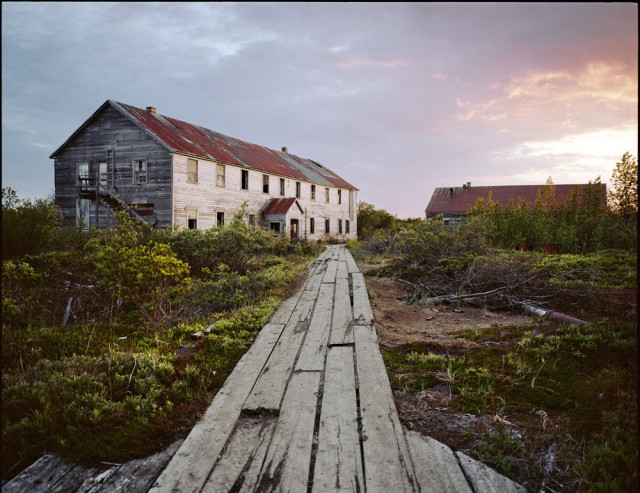
“The Graveyard Hotel,” one of many abandoned cannery buildings at Graveyard Point
Image: Corey Arnold
“We grew up thinking this way about food, so to us, this is normal,” Nicolson says. “Our frontiersman grandfather and our mothers really set that in our mind, that this fish that we catch is special. Being able to provide this quality food to people is something unique.”
This month, hundreds of city dwellers will troop to cold-storage warehouses in Southeast Portland and Williamsburg, Brooklyn, armed with coolers and tote bags, to claim fish harvested in a place where the lumberjack look is worn without irony. The Iliamna Fish Company bases its hopes on these self-motivated consumers, in a variation on the now familiar community supported agriculture (CSA) model. Customers pay up front, in June, just before salmon season begins. In September, they collect their glistening fillets, vacuum packed and frozen within hours of being caught.
While most of the company’s customers will have some notion of where the fish come from, few will grasp the logistical—and genealogical—chain in which they are the final link.
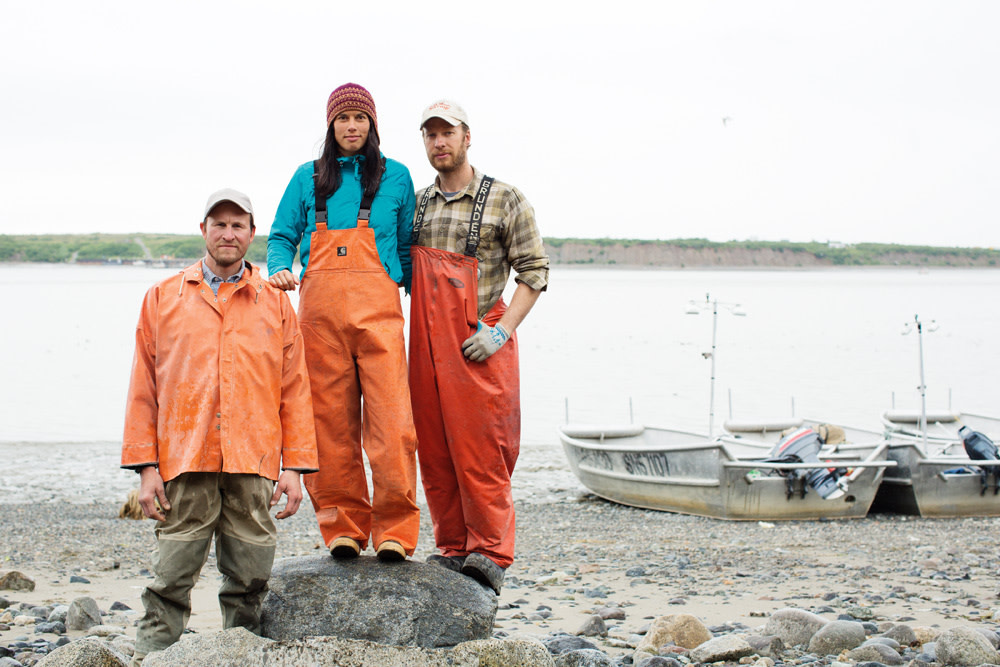
Christopher Nicolson (from left), Eike Ten Kley, and Reid Ten Kley stand on the shore in Naknek, Alaska.
Image: Corey Arnold
Ten Kley and Nicolson, along with their siblings, cousins, fathers, and uncles, troll the same stretch of water around Graveyard Point that their grandfather, Jack Vantrease, first fished in 1948. Their company is named after Lake Iliamna, Alaska’s largest freshwater lake, which has a dual significance to the cousins. Their grand-father’s log-cabin homestead, where their mothers grew up, sits at the lake’s eastern end, and the river they fish, the Kvichak, flows from the lake, a crucial piece of the salmon spawning ecosystem.
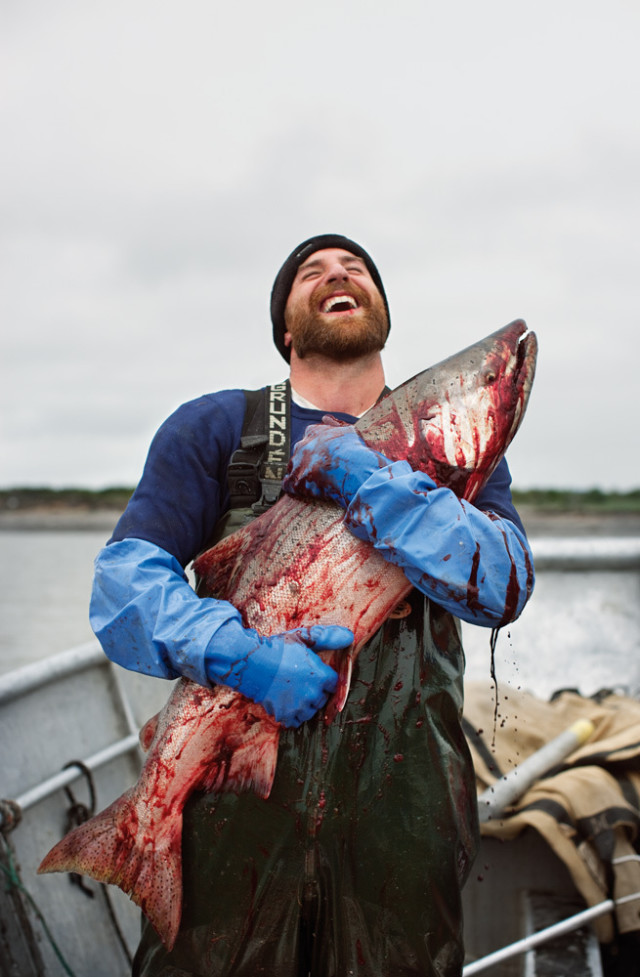
Ben Thomas, a member of the Iliamna crew, cradles a freshly killed 28-pound king salmon from Kvichak River.
Image: Corey Arnold
The basic business model here has remained the same for a long time. Fishermen set out in their small boats, trailing nets. A handful of large processing companies send larger boats out to buy fish straight off the fishing fleet’s decks, but the final price is set only at season’s end, when market conditions (and, fishermen would typically argue, the processing companies’ hard-boiled tactics) come into play. This system leaves fishermen subject to boom-and-bust cycles that could give a family farmer motion sickness. In the late 1990s, the bust began to look fatal. “I thought, there’s got to be something broken in the market here,” says Ten Kley, whose Alaska-born mother settled in Portland after meeting his father here during college. “At the grocery store, it’s still 12 bucks a pound. We’re getting paid 40 cents a pound.”
“We were wondering whether we’d be able to afford to continue fishing,” says Nicolson, “so we started thinking about selling the fish directly—a lot of people were thinking that way at the time—and we started this little business.”
“Our goal isn’t to be infinitely wealthy,” Ten Kley says. “It’s
really just to be able to keep doing this. We want a business we can do multigenerationally, and both catching the fish and selling it is something we see as a part of our lives going forward.”
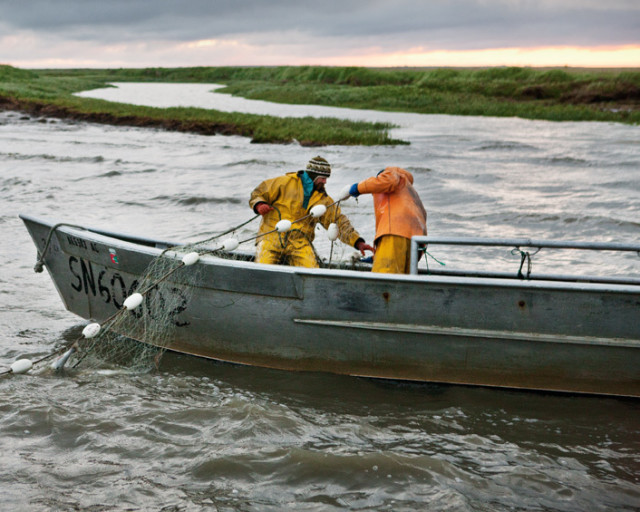
Iliamna’s Conor Kelly and Marty Machado set gillnets for sockeye at the mouth of a small creek at Graveyard Point.
Image: Corey Arnold
While others may have attempted similar strategies, few have thrived in a wild environment that is at best unpredictable and at worst dangerously uncooperative. The cousins’ system starts with a fish in the net—they choose only the very best of their catch to brand as Iliamna Fish Company product. (They sell the rest to one of Bristol Bay’s large processing companies.) They bleed fish immediately to preserve flesh quality. Then they offload the catch onto a larger “tender” boat, where salmon are submerged in an ice bath for the 20-mile run back to Naknek, a town that consists of a restaurant, a couple of bars, and a hardware store, its permanent population of about 600 swollen during the summer by hundreds of cannery workers. In Naknek, the fish are cleaned, flash-frozen, and loaded in a freezer container on a barge that will arrive in Seattle by early August. From Seattle, they are driven down to Portland or trucked cross-country to Brooklyn.
Ten Kley, an accountant by training, shepherds the operational details. His wife, Eike, who also grew up fishing at Graveyard Point with her family, manages the small firm’s Portland office. His father, Doug, and brother, Rian, often help out with deliveries. On the Brooklyn end, Nicolson’s wife, Emily, who has also logged many summers at Graveyard, does most of the organizing and communicating with clients. And though CSA-style sales are just one leg of IFC’s “tripod” strategy—the company also sells to restaurants and grocery stores like New Seasons—they have proven crucial. “With the pre-season deposit, we’re able to cover operating costs instead of investing our own money at the outset and trying to drum up a market later,” says Nicolson. The formula also avoids wastage, notes Ten Kley, vital in such a low-margin business. “If you throw one pallet of salmon away because it doesn’t sell,” he says, “that’s all your profit for the season right there.”
Of course, honed tactics and logistical skill only matter if you’re selling something people want to buy. “The quality and freshness of the fish is great—you can tell they take really good care of it, from selecting the fish to processing, freezing, and vacuum-packing it,” says Brandon Hill, executive chef at Portland’s Bamboo Sushi. Nationally renowned as a pioneer of “sustainable sushi,” Hill is in his second year of buying IFC sockeye. “People in Portland expect to know where their food comes from at this point,” he adds, “so having wild Bristol Bay sockeye highlighted on the menu is something people really respond to.”
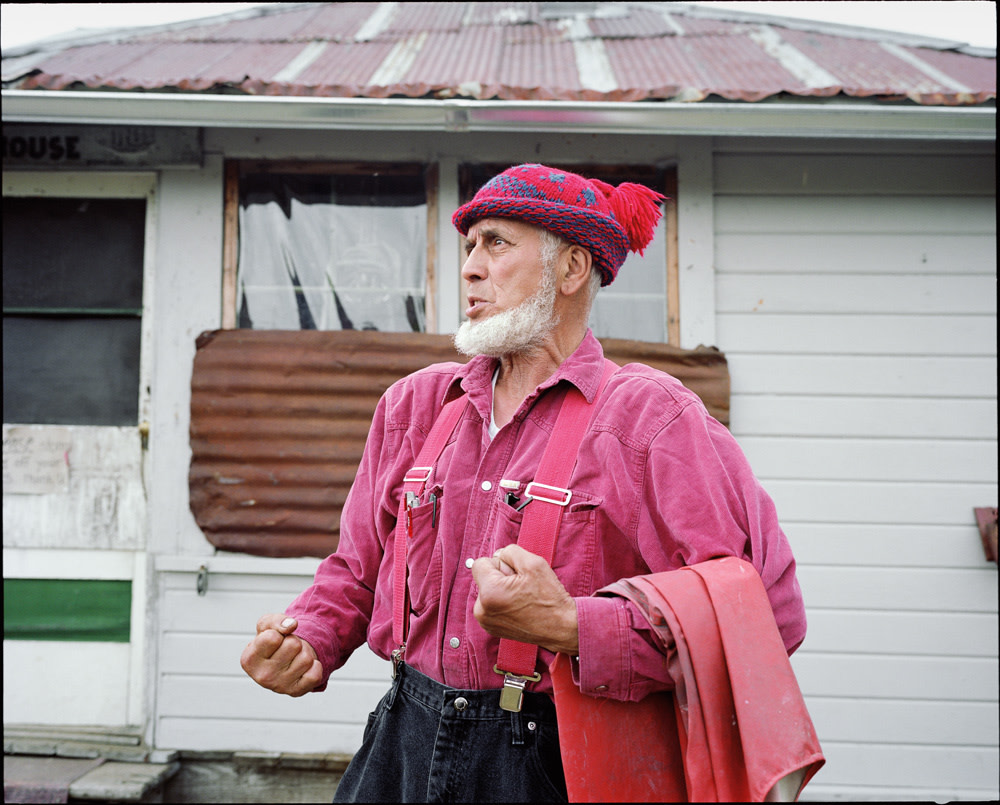
Lyle Smith, a founder of the Graveyard Point salmon camp
Image: Corey Arnold
Direct connection to the fishermen involved also seems to be a selling point. “A lot of our customers buy our fish because they know their food dollar is not going to a broker or middleman,” Ten Kley says. (In terms of green credibility, the Portland nonprofit Ecotrust concluded three years ago that flash-frozen, ground-transported fish like Iliamna’s have a much lower carbon footprint than fresh, air-transported fish.) That combination has led to an enviable growth curve. The company’s Portland client base rocketed from 35 members in 2008 to 365 this year. The Brooklyn operation, in only its third year, has roughly doubled, from 100 members to over 200. The company has even sold 40 shares for pickup in Eugene this year. Portland customers will get about 21 pounds of salmon (about 12 fillets) for $208, while the 12-pound Brooklyn shares (about 7 fillets) come in at $198. That comes out to $9.90 per pound for Portland and $16.50 per pound for Brooklyn—which compares favorably to local market prices.

One of Bristol Bay’s millions of spawning salmon breaks the waves.
Image: Corey Arnold
Meanwhile, Ten Kley and Nicolson have joined a coalition of fishing industry and Native groups battling Pebble Mine, a proposed copper and gold extraction project near the headwaters of two of the region’s key rivers. Troubled oceans and shifting markets could change their future in unforeseen ways. What they are sure of is that this tough life in a tough place is worth it. “We’re providing something tangible,” Ten Kley says. “I also write computer software, which no one ever sees. Not to knock that, but it doesn’t compare to holding a massive fish.”




